An avid birdwatcher captures through his lens a variety of birds that have made this society their home, owing to its variegated green cover.
 Nitin Sirohi captures brown-headed Barbet (on the wire) and prinia
Nitin Sirohi captures brown-headed Barbet (on the wire) and prinia
Living in an urban housing society — and that, too, in a busy city such as Gurgaon — you can hardly imagine birds sharing the living space around you. And even if you can imagine such a peaceful coexistence, the quintessential picture that will flash through your mind is that of pigeons. The one bird that has often managed to survive the urban chaos.
However, if you observe the space around you more closely, you’ll find a number of other species — some easily recognisable, and others seasonal, even accidental, visitors. So here are a few of them — yes, all these birds can be seen right here in Uppal’s Southend. And there is this magnificent tree that has survived many efforts at being felled, but which is still going strong and is home to hundreds of birds every day. It was planted by our neighbour, and though he's no more, the tree stands tall, providing shelter to our winged friends.
Besides the pigeon, the other bird that is often seen is the common babbler. This bird lives and travels in groups of 6 to 20. They are also known as the Seven Sisters, but that does not indicate that they live in groups of seven. You can’t miss a group of babblers, because it’s hard to ignore their chatter.
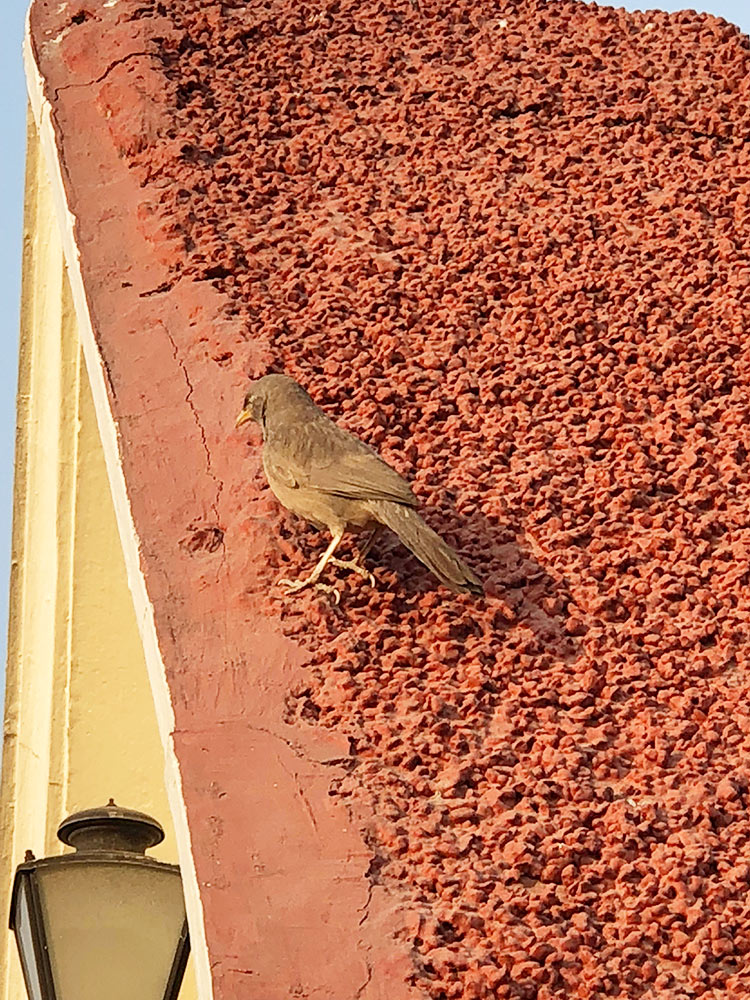
The common babbler
Another bird that can be commonly seen around Gurgaon is the gursal, also called the Indian myna or the common myna. These birds are known for their beautiful singing abilities and how they are able to produce a variety of sounds.
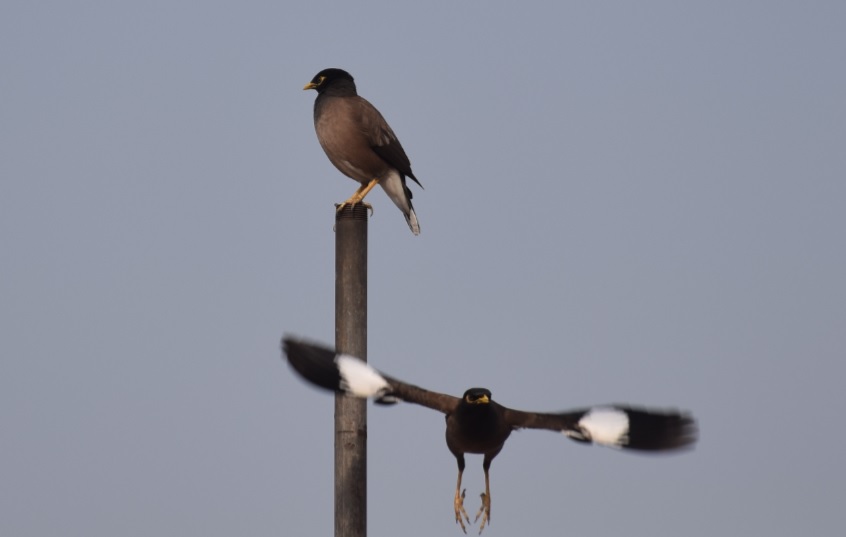
The common myna
The rose-ringed parakeet, too, inhabits the trees of our society. They can be especially found around the overhead water tank. If you live on the second floor, you can find them perched on treetops, especially in the winter months. It’s hard to miss them, as they make quite a racket when flying around.
And then you have the common Indian sparrow, or the house sparrow — a bird that has suffered the worst fate due to mass urbanisation. They are cautious when building their nests. This bird has for years lived and survived alongside human habitation, and can actually thrive in both the urban and the rural milieu.
However, due to the boxed designs of our homes today, they seldom find safe and cosy spots to nest. If you provide a safe environment to them, they can become your friends — and this I say from personal experience.
I spent more than two years with a family of sparrows on my terrace, and they have always responded to my calls, especially when I offered them multigrain biscuits. In our society, they often nest in the shaft of the third-floor apartments.
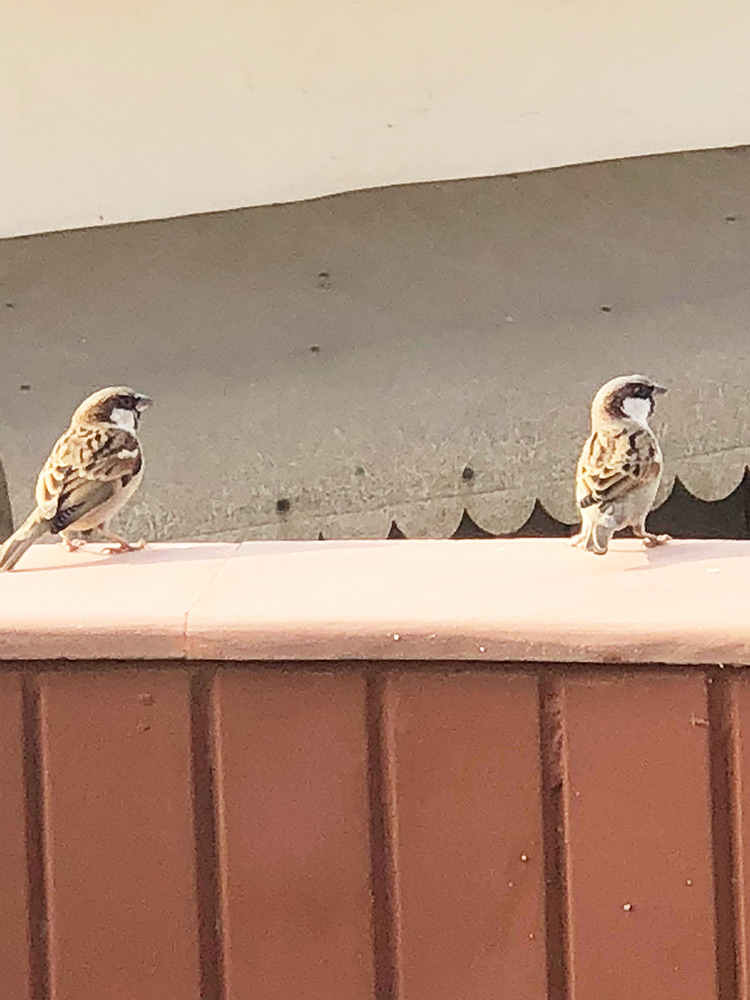
The house sparrow
Bulbuls can also be frequently seen around Uppal's Southend, often in pairs. They like to perch on the top of terraces, just like robins, and sing out beautifully. They can often be seen perched on electric wires and poles too. The species that are commonly seen in Uppal's Southend, like in most other places, is the red vented bulbul.
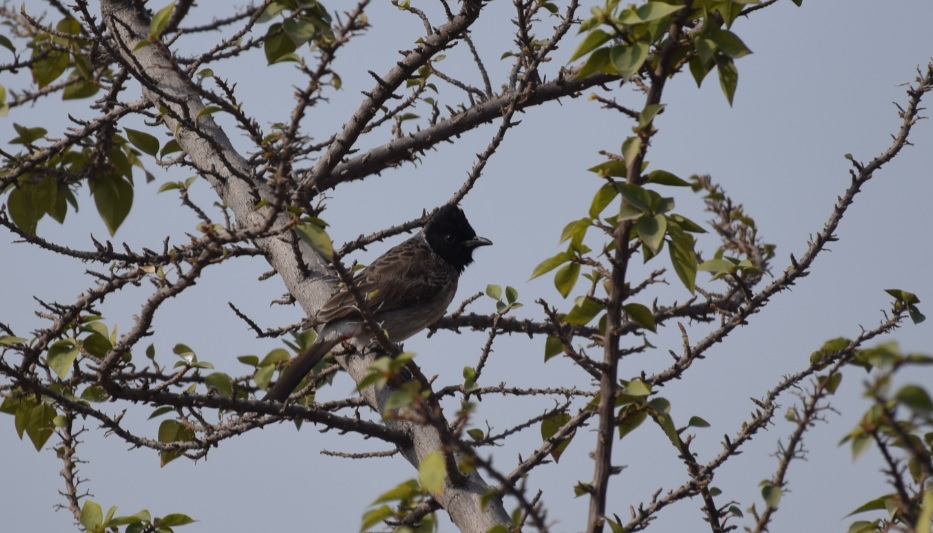
The bulbul
The dark brown Indian robin is a little bird that can often be seen perched on rooftops or on the pipes of overhead water tanks. These small birds make short tweeting sounds, with their tails pointing upwards. If you are lucky, you’ll also spot their cousin — the oriental magpie robin (in different shades of white) — also around here. Though I have seen them, I have not been able to capture a picture.
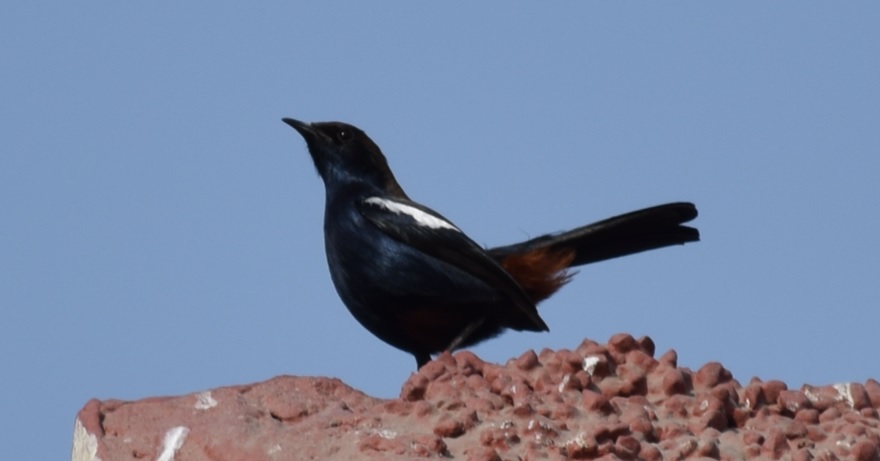
The Indian robin
Now we move to our demure and tiny neighbor, the ashy prinia. This bird is from the warbler family. It is small and light brown in colour, with a prominent tail. It makes a distinctive “zeet-zeet-zeet” sound, and when flying, makes a curious flapping noise perhaps due to the meeting of its wings when in flight. This shy bird is fond of picking worms from the lawns and often travels solo.
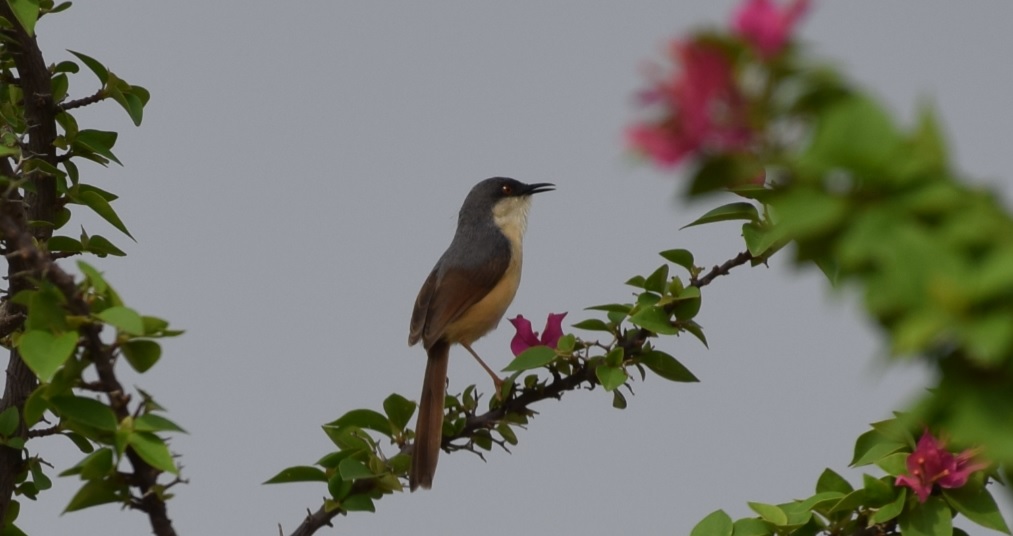
The ashy prinia
Sunbirds can be seen more during winters. They are fond of nectar and are often seen enjoying nectar from petunias, flowers of aloe vera, that bloom only in winters. They flutter their wings like hummingbirds and can remain stationary in the air for quite a few seconds. These birds are light brown in colour, with slightly turned and sharp beaks, and make a distinctive sound of “twee-twee”. Here, they often perch themselves on bougainvillea of terrace gardens on second-floor houses by Niho.
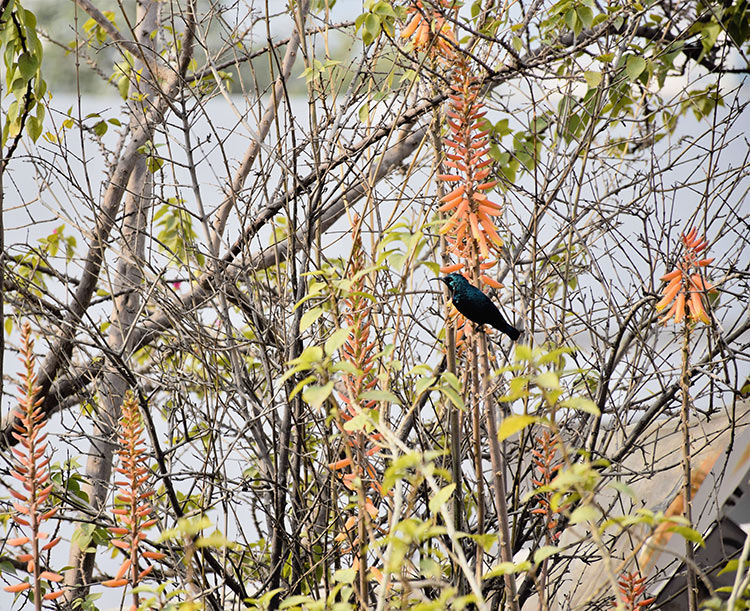
A purple sunbird
And now, I’ll turn my attention to the rare guests and the accidental visitors.
I have seen the rufous treepie, or the Indian treepie, perched on the magnificent tree right beside us, mostly in winters. They make a distinct “cook-a-ling” sound. In the picture below, the treepie is perched on the magnificent tree that I spoke about earlier.
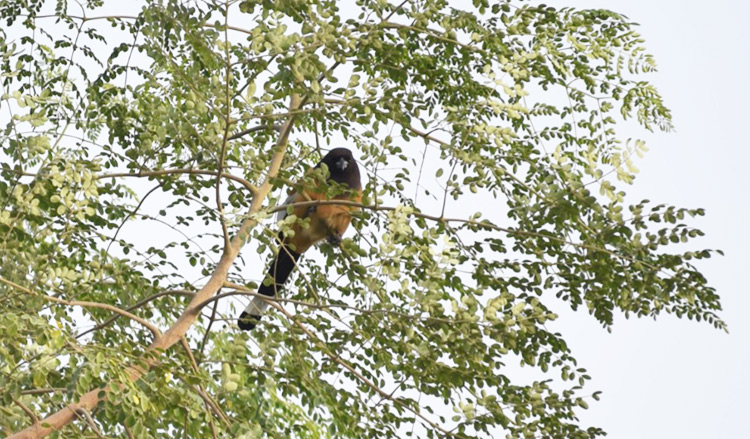
The Indian treepie
Occasionally, a white-breasted kingfisher decides to make a detour to our society from the few water bodies left around Gurgaon. Sometimes, you’ll also see a little bush warbler or a tit perched between flower pots.
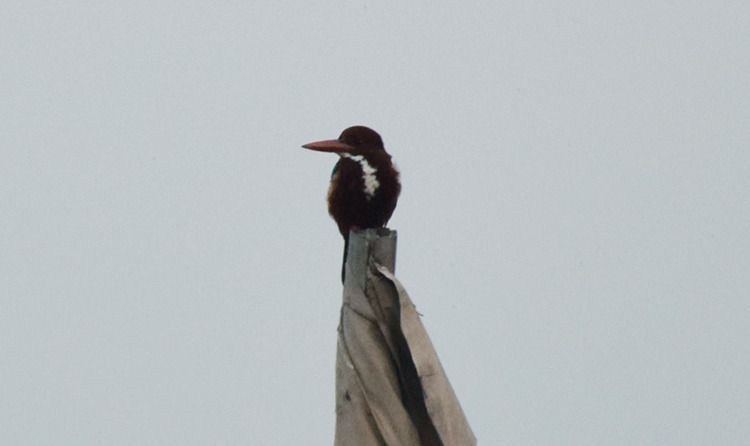
The white-breasted kingfisher
I have seen brown-headed barbets, which make a monotonous “kutroo-kutroo-kutroo” sound — and occasionally, a green bee eater.
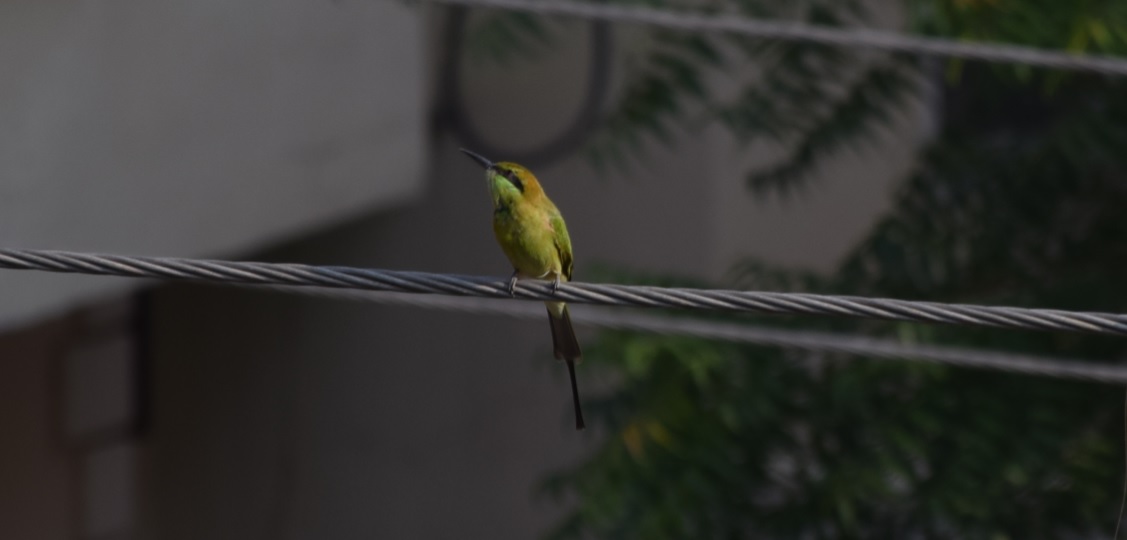
And a few years back, this one-legged (perhaps as a result of an accident) barn owl had surprised us one morning, perched on top of our AC unit. And it stayed put for almost a full night.
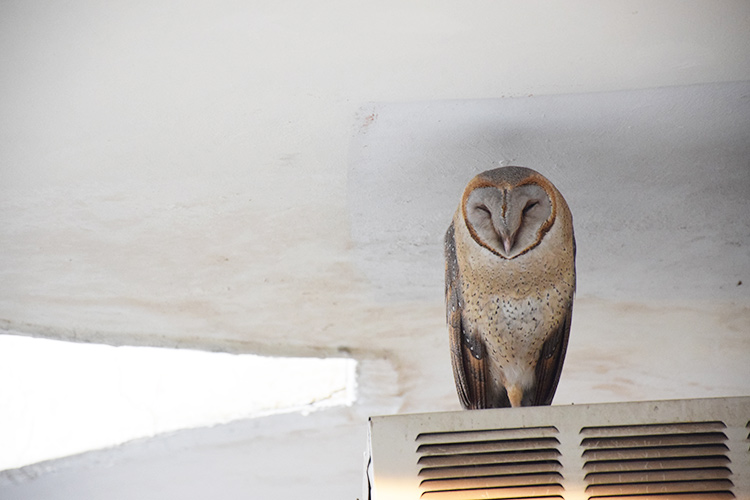
Uppal's Southend's one-legged barn owl
There’s also a colony of crows in the grove of eucalyptus trees near Omaxe Nile and the beer factory in our neighbourhoood. And around sundown, you can see hundreds of crows flying towards their homes.
At Uppal’s Southend, we have been lucky to have a green cover, with a variety of trees. People who stay on the upper floors have an advantage, being at the tree level, and they can see some of these beautiful birds perched on the branches.
The best period of the year to watch these birds is between November and March, when the temperature is not too high. The warm, sunny days keep the birds out flying and hopping around. So pick up those binoculars and SLRs and observe these magnificent species around you.